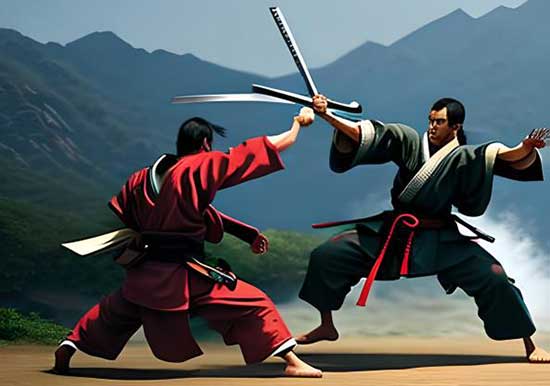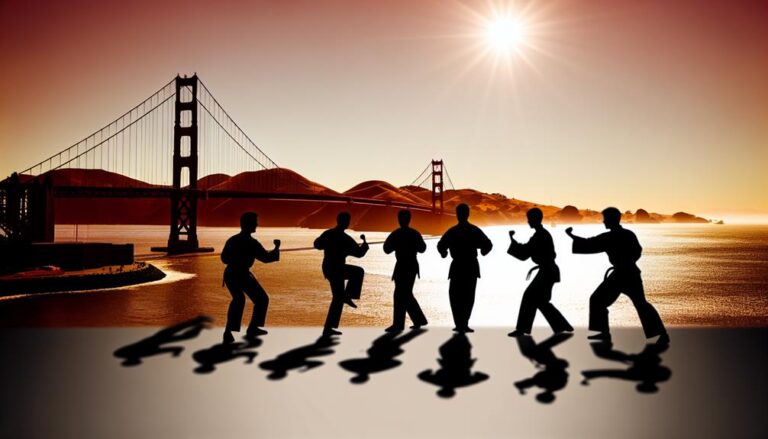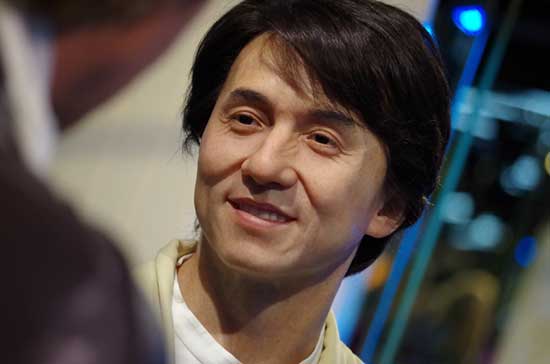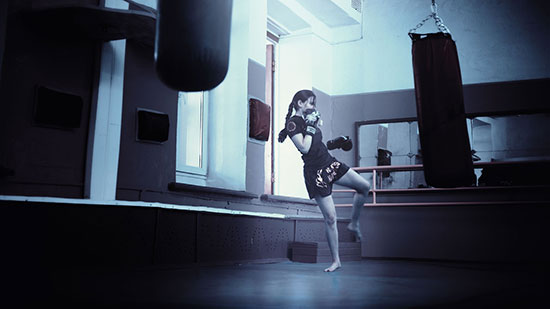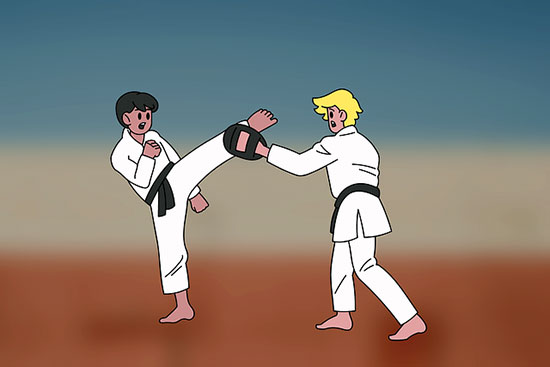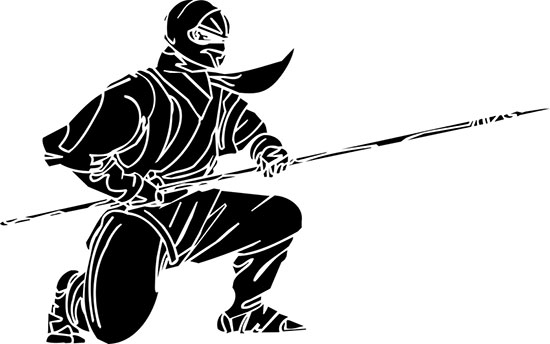Mixed martial arts (MMA) is a full-contact combat sport that incorporates techniques from various combat sports. Capoeira, a Brazilian martial art known for its acrobatic movements, is not commonly used in MMA. While capoeira has a rich history and unique style, it faces certain limitations that make it less suitable for the demands of MMA.
Capoeira’s emphasis on flexibility, acrobatics, and complex movements can be difficult to execute effectively in the confines of an MMA cage, where simplicity and efficiency are prioritized. Additionally, capoeira’s lack of emphasis on traditional striking and grappling techniques may put practitioners at a disadvantage in MMA competition.
Although capoeira may not be commonly seen in MMA, it continues to thrive as a standalone martial art and cultural practice.
Key Takeaways:
- Capoeira’s unique characteristics make it less suitable for the demands of MMA.
- The emphasis on flexibility and acrobatics in capoeira may be difficult to execute in an MMA cage.
- The lack of emphasis on traditional striking and grappling techniques in capoeira may put practitioners at a disadvantage in MMA competition.
- Capoeira continues to thrive as a standalone martial art and cultural practice.
Contents
The History and Origins of Capoeira
Capoeira has a fascinating history rooted in Brazil with significant African influence. It originated during the time of slavery as a form of resistance and self-defense practiced by enslaved Africans. Over the years, capoeira has evolved and incorporated elements from various martial arts and cultural traditions, making it a unique martial art with its own distinct style and techniques.
The African roots of capoeira are evident in its rhythmic movements and music. Enslaved Africans brought their cultural practices, including music and dance, to Brazil, which influenced the development of capoeira. These movements and music are integral components of capoeira, making it a martial art that is as much about expression and artistry as it is about combat.
Capoeira gained further recognition through interstylistic contests in Japan, where matches between different martial arts styles, including capoeira, took place. Furthermore, capoeira’s influence extended to Brazil’s vale tudo, or “anything goes,” fights, where different martial arts styles clashed in unrestricted battles.
To visualize the historical influence and development of capoeira, refer to the table below:
| Period | Significant Events |
|---|---|
| Slavery Era | Enslaved Africans in Brazil develop capoeira as a form of self-defense and resistance. |
| 19th Century | Capoeira carioca emerges as a street-fighting style, incorporating additional techniques. |
| Japan Interstylistic Contests | Capoeira showcases its unique style and techniques in matches against other martial arts styles. |
| Brazil’s Vale Tudo | Capoeira participates in unrestricted fights against other martial arts, gaining further recognition. |
Through these events, capoeira has evolved and developed into the vibrant martial art we know today, continuing to be celebrated for its cultural significance and artistic expression.
Capoeira Techniques and Style
Capoeira is a martial art renowned for its unique blend of acrobatics, kicks, and evasions. The core techniques of capoeira encompass a range of dynamic movements that showcase the art’s distinct style. Some of the core capoeira techniques include:
- Cabeçada (headbutt)
- Rasteira (sweep)
- Chapa de frente (front push kick)
- Chapa de Costas (back push kick)
- Meia lua (crescent kick)
- Cutilada de mão (hand chop)
These techniques, along with others, form the foundation of capoeira’s repertoire. However, it is important to note that capoeira is not limited to these specific techniques, as the art encourages improvisation, creativity, and the integration of individual styles.
Capoeira Styles
Capoeira is often categorized into different styles, each with its own distinct movements and characteristics. Some of the notable capoeira styles include:
- Capoeira Carioca: Also known as the “street-fighting style,” Capoeira Carioca emerged in the 19th century and incorporated techniques like headbutts, foot kicks, open hand blows, blades, and stick techniques.
- Capoeira Angola: Capoeira Angola focuses on preserving the traditional techniques and gameplay of capoeira, emphasizing lower, grounded movements and a slower pace.
- Capoeira Regional: Capoeira regional, on the other hand, incorporates new techniques from other martial arts and emphasizes a more dynamic and athletic style of play.
These different styles offer practitioners the opportunity to explore and develop their own unique approach to capoeira, showcasing the versatility and adaptability of the martial art.
Capoeira Limitations in MMA
While capoeira is a fascinating and dynamic martial art, it faces certain limitations that make it less suitable for the demands of MMA. In MMA, fighters need to be well-rounded and proficient in a variety of techniques, including striking, grappling, and ground fighting. While capoeira incorporates acrobatics, kicks, and evasions, it may not provide the necessary emphasis on traditional striking and grappling techniques that are crucial in MMA competition.
Compared to other martial arts commonly used in MMA, capoeira’s emphasis on complex movements and flashy acrobatics may not translate well in the controlled environment of an MMA fight. MMA prioritizes simplicity, efficiency, and effectiveness in a combat setting, where fighters need to make quick decisions and execute techniques with precision. Capoeira’s reliance on fluid movements and theatricality may put practitioners at a disadvantage, as they may struggle to adapt to the fast-paced and intense nature of MMA.
In addition, capoeira’s lack of widespread adoption in MMA also stems from the fact that it does not fully encompass the range of techniques required in the sport. MMA fighters need to be well-versed in a combination of striking, grappling, and ground fighting, and capoeira may not offer the same depth in these areas as other martial arts like Brazilian jiu-jitsu, Muay Thai, or wrestling. This puts capoeira practitioners at a disadvantage when pitted against fighters with a more comprehensive skill set.
| Capoeira | Other Martial Arts |
|---|---|
| Emphasizes complex movements, acrobatics, and kicks. | Includes a wider range of techniques, including striking, grappling, and ground fighting. |
| Prioritizes fluid movements and theatricality. | Emphasizes simplicity, efficiency, and effectiveness in combat. |
| Lacks emphasis on traditional striking and grappling techniques. | Offers a comprehensive skill set for MMA fighters. |
While capoeira may not be commonly seen in the MMA cage, it continues to thrive as a standalone martial art and cultural practice. Its unique style, rich history, and emphasis on flexibility and agility make it a valuable form of self-expression and physical movement. While the demands of MMA may not align perfectly with capoeira’s characteristics, the art form still holds its place as an important part of the martial arts world.
Capoeira Training and MMA Fighters
While capoeira may not be commonly used in MMA, it offers unique benefits to MMA fighters who incorporate elements of this martial art into their training and fighting styles. Capoeira training can enhance agility, flexibility, and footwork, providing fighters with an edge in the cage. The dynamic movements and acrobatics of capoeira can be especially useful in evading strikes and executing unpredictable attacks, creating opportunities for fighters to capitalize on their opponents’ weaknesses.
MMA fighters who have a background in capoeira often adapt and incorporate other martial arts techniques to complement their capoeira skills. By combining capoeira with disciplines like Brazilian jiu-jitsu, Muay Thai, or wrestling, fighters can develop a well-rounded arsenal of techniques suitable for the diverse demands of MMA competition. The integration of capoeira techniques into their fighting style allows these fighters to bring a unique flair and unpredictability to their performances, making them stand out in the cage.
However, it is important to note that capoeira’s role in MMA is not as prevalent as other martial arts. The emphasis on flashy acrobatics and complex movements in capoeira may not always translate well within the controlled and tactical environment of an MMA fight. Additionally, while capoeira training can provide fighters with certain advantages, such as improved agility and footwork, its lack of emphasis on traditional striking and grappling techniques may put practitioners at a disadvantage against opponents with a more focused background in these areas.
Notable MMA Fighters with Capoeira Background
| Fighter | Nickname | MMA Organization | Notable Achievements |
|---|---|---|---|
| Anderson Silva | The Spider | UFC | Former UFC Middleweight Champion |
| Leranor Xavier Dias | Leranor | Bellator MMA | Multiple-time Capoeira World Champion |
| Alan Nascimento | Nuguette | UFC | Undefeated in his first 12 professional MMA fights |
| Luis Henrique da Silva | Frankenstein | UFC | Multiple-time winner of Performance of the Night bonus |
Despite its limited use in MMA, capoeira continues to be appreciated for its cultural significance and as a standalone martial art. It serves as a testament to the diversity and richness of martial arts traditions around the world. While capoeira may not be the primary strategy for most MMA fighters, its influence can still be seen through the creativity and adaptability displayed by those who have integrated its techniques into their fighting styles.
The Evolution of MMA and the Influence of Capoeira
Mixed Martial Arts (MMA) has undergone significant evolution since its early days as a no-rules fighting contest. From being an underground phenomenon to a regulated sport with specific rules and safety measures, MMA has seen the incorporation of various martial arts into its training and techniques. While capoeira may not be one of the foundational martial arts in MMA, it has had some influence on the sport.
Exhibitions of Capoeira in MMA
Although capoeira is not commonly used as a primary fighting style in MMA, there have been occasional exhibitions and demonstrations of capoeira techniques within the sport. These exhibitions serve to showcase the unique elements of capoeira, such as its acrobatic movements and dynamic kicks. However, it is important to note that these demonstrations do not necessarily indicate widespread adoption or regular use of capoeira in MMA.
The influence of capoeira on MMA goes beyond direct usage in fights. MMA fighters with a background in capoeira often adapt and incorporate elements of the martial art into their training and fighting styles. Capoeira training can contribute to a fighter’s agility, footwork, and overall athleticism, which can be advantageous in the fast-paced nature of MMA. However, these fighters typically integrate other martial arts techniques to enhance their effectiveness in MMA competition.
As MMA continues to evolve, it is likely that traditional martial arts like capoeira will continue to have a presence in the training practices of fighters. While capoeira may not be a dominant force in MMA, its influence on the sport can be observed through its occasional appearances and its contribution to the overall skill set of certain fighters.
| MMA Evolution | Influence of Capoeira |
| Moved from no-rules fighting to regulated sport | Capoeira occasionally showcased in exhibitions |
| Adoption of traditional martial arts in training | Capoeira training incorporated by some MMA fighters |
| Continued evolution and integration of different styles | Capoeira’s influence contributes to the overall skill set of fighters |
Conclusion
The integration of capoeira into MMA is limited due to its unique characteristics and focus on complex movements and acrobatics. While capoeira training can benefit MMA fighters in terms of agility and footwork, its lack of emphasis on traditional striking and grappling techniques may put practitioners at a disadvantage in the cage.
MMA has evolved as a sport, with established martial arts such as Brazilian jiu-jitsu, Muay Thai, boxing, and wrestling serving as the foundation for training. These martial arts provide fighters with a comprehensive skillset that aligns with the demands of MMA competition, where simplicity, efficiency, and effectiveness are prioritized.
While capoeira may not be commonly used in MMA, it continues to thrive as a standalone martial art and cultural practice. Appreciated for its rich history and unique style, capoeira maintains its own community of practitioners who value its cultural significance. Capoeira’s role in MMA may be limited, but its presence and impact on the martial arts world cannot be overlooked.
